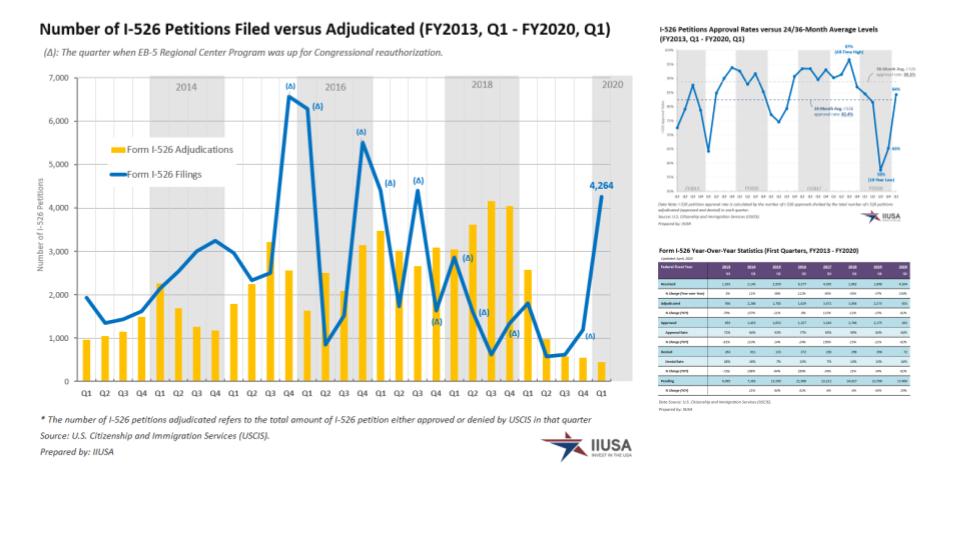On April 20, 2020, USCIS published Form I-526 quarterly statistics for the first quarter (Q1) of fiscal year (FY) 2020 (October 1st – December 30th, 2019).
As the new EB-5 regulations became effective in the middle of Q1, FY2020, the statistics for Form I-526 for that quarter were particularly important in illustrating the demand for EB-5 before the minimum investment amount was raised by the new regulations. In addition, the data also shed some light on USCIS’ adjudications of I-526 petitions in the midst of the first significant revision of the EB-5 Program’s regulations since 1993. Combined with historical Form I-526 statistics, IIUSA produced this data report highlighting a few key trends about EB-5 capital investment inflows, I-526 filings, adjudications, approval rates, and backlog.
IIUSA members click here to download the full data analysis (members-only).
KEY DATA BRIEFING:
I-526 Filings: 4,264 EB-5 investors filed their I-526 petitions during Q1, FY2020, a 260% jump from the previous quarter and a 136% growth year-over-year.
EB-5 Investment Inflows: Based on the I-526 filings, we estimated that over $1.8 billion in EB-5 capital investment was injected to the U.S. economy during the first quarter of FY2020. As investors seized the last opportunity to participate in the EB-5 Program before the minimum investment amount was raised by the new regulations on November 21, 2019, the amount of EB-5 investment inflows in Q1 FY2020 was even larger than the total amount of EB-5 capital that was raised in the full year of FY2019.
I-526 Adjudication: Only 455 I-526 petitions were adjudicated by USCIS in Q1 FY2020, a drop of 17% from the last quarter. The volume of I-526 adjudications continued to decline for six quarters in a row.
I-526 Approval Rate: The average approval rate of an I-526 petition was 84% in Q1 FY2020, continuing to bounce back from the historical low in Q3, FY2019.
I-526 Backlog: Due to the increase of I-526 filings, the backlog of I-526 petitions was up by 27% from the last quarter to nearly 17,500 by the end of Q1, FY2020.
IIUSA members click here to download the full data analysis (members-only).










